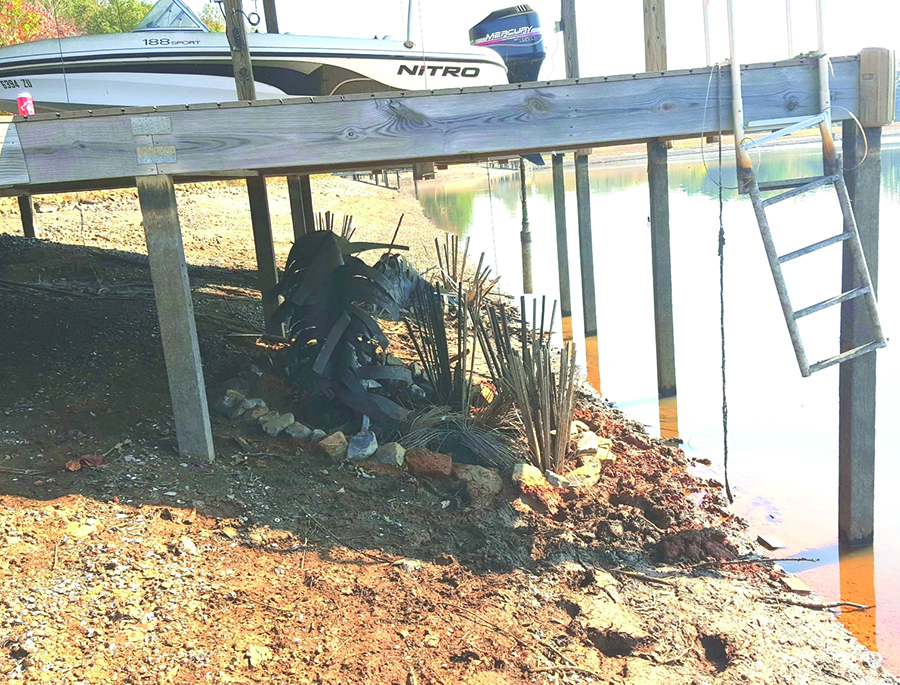Written by SOLitude Lake Management Field Manager Steven King
When it comes to bass fishing, any experienced angler would agree that targeting the correct structure is essential to catching fish
To anglers, the word “structure” is a very broad term that can be broken down into two main categories:
1) Natural (trees, brush, rocks, vegetation and natural contours of the waterbody)
2) Artificial (docks, bridges, seawalls, fish attractors or concrete blocks added to the water, like rip-rap often seen along dams).
Having an adequate and diverse amount of structure in a waterbody is necessary for the success of bass populations and is a key factor in managing for quality bass. To sustain or create a quality bass fishery, it is important to add or manage structures in the water to create an ideal habitat.
To ensure a lake or pond contains the appropriate habitat, the various needs of bass species should be considered:
1) Protection from predators for newly hatched bass fry and the small forage species on which bass feed. This can help increase the survival rate of the forage fish, ensuring more reach maturity to reproduce and provide a sustainable food source. This will also increase the proportion of bass that survive to maturity to catch in the future.
2) Ambush cover for predatory fish like bass to catch prey. The less work and energy bass require to feed, the more successful they will be.
3) Shelter to provide relief from the hot summer temperatures. Bass regularly utilize various structures to cool down and reduce stress, whic
4) Cover during the spring spawning months. Spawning time is a stressful point in a bass’ life cycle, and they will use structures to rest and feed before and after they spawn.
5) Protection for their eggs following spawning. Bass will often choose a spot that has one or more protected sides to create a bed for their eggs. This makes it easier for them to guard the eggs from other fish and expend less energy as protectors.
No matter the size of a lake, having an array of structure present is key to developing a healthy and sustainable fishery. And even if your waterbody already has some cover present, it is often beneficial to add additional cover to create a more diverse habitat. To ensure the success of your fishery, consider working with a professional fisheries manager who can assess the habitat complexity in your waterbody and recommend other strategies, including selective harvesting, supplemental feeding, water quality testing, aeration and vegetation management to help you achieve—and exceed—your fisheries goals.
Steven King is a Field Manager at SOLitude Lake Management, an environmental firm providing full service lake, pond, and fisheries management solutions throughout the United States. He can be reached through the website: www.solitudelakemanagement.com.